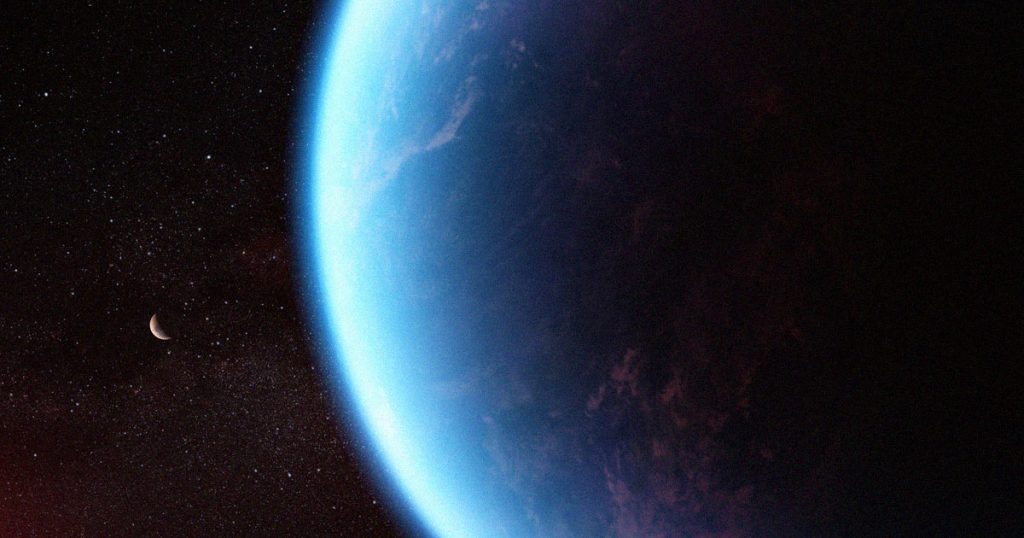The James Webb Space Telescope, a marvel of astronomical technology, has unveiled intriguing evidence suggesting the presence of a massive ocean on an exoplanet located approximately 120 light years away. This discovery has ignited the possibility of life beyond our planet’s borders.
The telescope’s observations have detected dimethyl sulfide (DMS), a molecule typically associated with living organisms on Earth, on a celestial body known as K2-18 b. It is situated within the Leo constellation, orbits a cool dwarf star, and resides within the habitable zone of its solar system. This positioning implies that the exoplanet receives sufficient radiation from its host star to sustain liquid water on its surface—a vital ingredient for potential life.
While K2-18 b was initially discovered by NASA’s K2 mission in 2015, the James Webb Telescope’s meticulous observations have unveiled the presence of these significant molecules, sparking tremendous excitement in the scientific community.
K2-18 b falls into the “sub-Neptunes” category, exoplanets that differ substantially from any within our solar system. NASA emphasizes the challenge of comprehending these enigmatic celestial bodies, given their distinctiveness.
Subhajit Sarkar of Cardiff University, a co-author of a yet-to-be-peer-reviewed paper on the discovery, noted, “Although this kind of planet does not exist in our solar system, sub-Neptunes are the most common type of planet known so far in the galaxy. We have obtained the most detailed spectrum of a habitable-zone sub-Neptune to date, and this allowed us to work out the molecules that exist in its atmosphere.”
However, it is imperative to exercise caution before assuming that K2-18 b teems with life, as more data is urgently required. Nikku Madhusudhan, the team lead and a professor at the University of Cambridge, expressed the need for prudence, stating, “If confirmed, it would be a huge deal, and I feel a responsibility to get this right if we are making such a big claim.”
Fortunately, additional data is already en route, courtesy of the James Webb Telescope’s MIRI (Mid-Infrared Instrument) spectrograph. Madhusudhan articulated the team’s ultimate objective: “Our ultimate goal is the identification of life on a habitable exoplanet, which would transform our understanding of our place in the universe. Our findings are a promising step towards a deeper understanding of Hycean worlds in this quest.”

